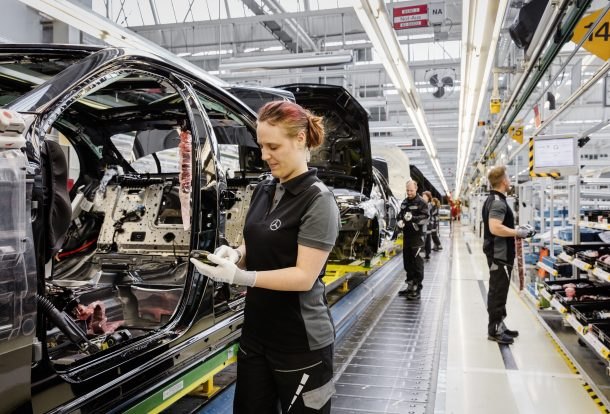Daimler's Breaking Up the Band: German Giant Plans Massive Corporate Overhaul

Daimler AG unveiled a new corporate structure on Thursday that splits its core businesses into a three legally independent entities, with one of the arms focusing entirely on mobility and financial services.
It’s a sign of the times as automakers press ever deeper into an uncertain tomorrow, all thanks to mobility and data services. “The new structure positions Daimler to tackle the rapid pace of change in the mobility sector and the corresponding strategic challenges,” explained Supervisory Board chairman Manfred Bischoff. “Legally independent divisions will sharpen our focus on the future success of the business.”
This is no small feat, as altering the structure involves reassigning more than 700 Daimler subsidiaries in over 60 countries. After which, Mercedes-Benz AG, Daimler Truck AG and Daimler Mobility AG will operate as one under the Daimler AG umbrella.
According to the automaker, the new structure will better prepare for the future with “greater entrepreneurial freedom” for divisions, stronger market and customer focus, and the availability of faster and more flexible partnerships. It also adds some protection for the other divisions, as the mobility unit ventures out into untamed territory and new business opportunities.
Already legally independent, Daimler Financial Services will be baked into Daimler Mobility AG.
Once the structure is fully implemented, Daimler says Mercedes-Benz AG should have around 175,000 employees worldwide. Meanwhile, the Trucks & Buses division, under the leadership of Daimler Truck AG, will have around 100,000 employees and Financial Services plays host to roughly 13,000 employees of its own.
Entitled “Project Future,” Daimler believes the new strategies will better position itself for the challenges and opportunities of what it calls “the new automotive era.”
“Project Future is the consistent continuation of our strategy,” said Mercedes-Benz head Dieter Zetsche. “We are reshaping our organization to put Daimler in the best position for the future: technologically, culturally — as well as structurally. At the heart of all these changes are the needs of our customers around the world: With the new structure we will be able to offer them mobility solutions even better tailored to their needs.”
The Board of Management and Supervisory Board for Daimler AG have already approved the divisional structure of the auto group. The matter will now be submitted for approval by shareholders at Daimler’s annual meeting in May of 2019. Full implementation of the corporate strategy is expected by 2020.
[Images: Daimler]

A staunch consumer advocate tracking industry trends and regulation. Before joining TTAC, Matt spent a decade working for marketing and research firms based in NYC. Clients included several of the world’s largest automakers, global tire brands, and aftermarket part suppliers. Dissatisfied with the corporate world and resentful of having to wear suits everyday, he pivoted to writing about cars. Since then, that man has become an ardent supporter of the right-to-repair movement, been interviewed on the auto industry by national radio broadcasts, driven more rental cars than anyone ever should, participated in amateur rallying events, and received the requisite minimum training as sanctioned by the SCCA. Handy with a wrench, Matt grew up surrounded by Detroit auto workers and managed to get a pizza delivery job before he was legally eligible. He later found himself driving box trucks through Manhattan, guaranteeing future sympathy for actual truckers. He continues to conduct research pertaining to the automotive sector as an independent contractor and has since moved back to his native Michigan, closer to where the cars are born. A contrarian, Matt claims to prefer understeer — stating that front and all-wheel drive vehicles cater best to his driving style.
More by Matt Posky
Latest Car Reviews
Read moreLatest Product Reviews
Read moreRecent Comments
- Varezhka Maybe the volume was not big enough to really matter anyways, but losing a “passenger car” for a mostly “light truck” line-up should help Subaru with their CAFE numbers too.
- Varezhka For this category my car of choice would be the CX-50. But between the two cars listed I’d select the RAV4 over CR-V. I’ve always preferred NA over small turbos and for hybrids THS’ longer history shows in its refinement.
- AZFelix I would suggest a variation on the 'fcuk, marry, kill' game using 'track, buy, lease' with three similar automotive selections.
- Formula m For the gas versions I like the Honda CRV. Haven’t driven the hybrids yet.
- SCE to AUX All that lift makes for an easy rollover of your $70k truck.



































Comments
Join the conversation
"It also adds some protection for the other divisions, as the mobility unit ventures out into untamed territory and new business opportunities." Clever, those Germans.... Recognizing that they, as opposed to many/most others chomping at hopping on the hype train, have something tangible, hard to recreate and valuble to lose.